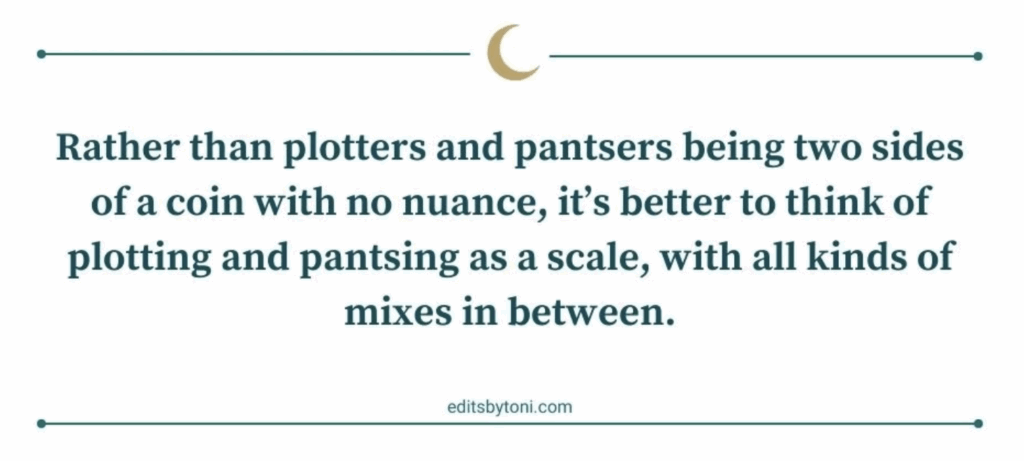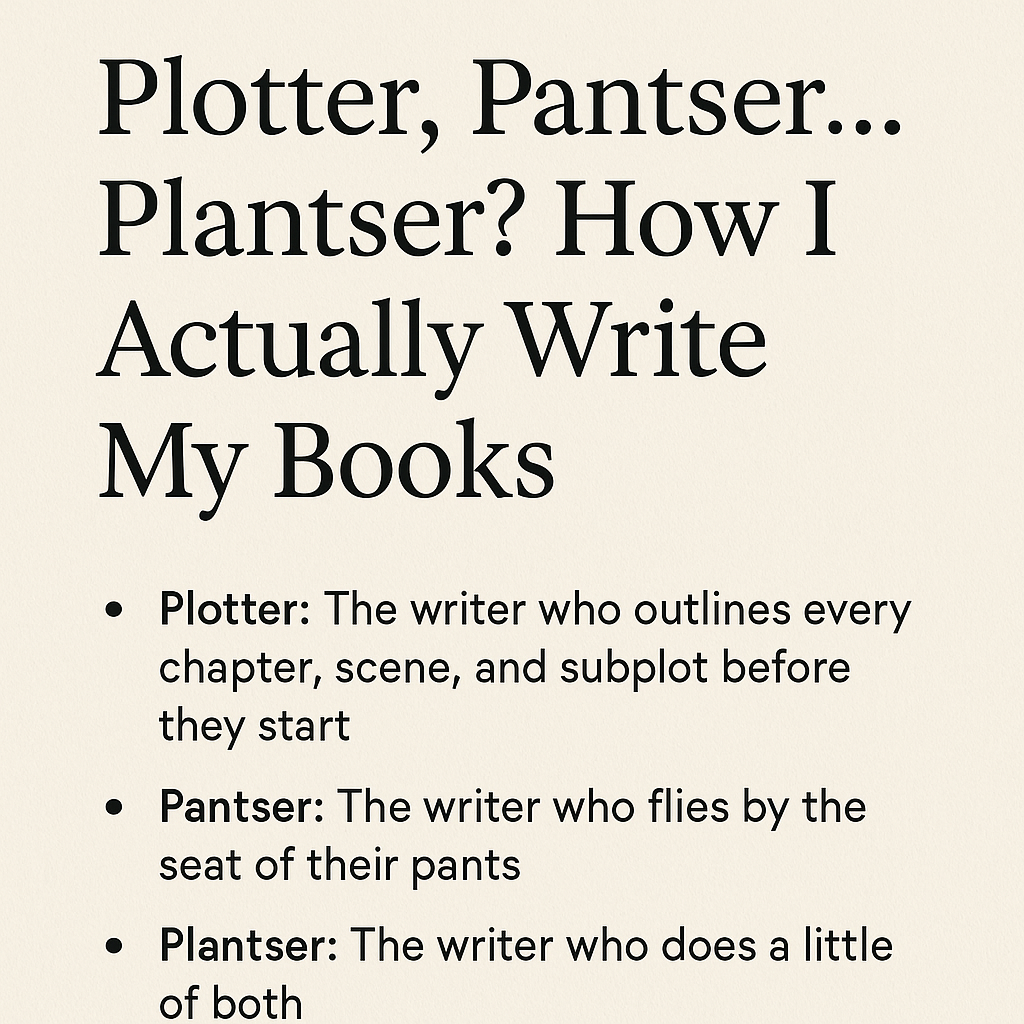If you’d asked me a few years ago what kind of writer I am, I would have said “plotter” without hesitation. I love a good plan. Give me an outline, a spreadsheet, some sticky notes, and I’m in my happy place. I thought outlining everything in advance would help me stay focused and productive.
Turns out, I was wrong.
I’m a Plantser, Through and Through
What I’ve discovered, through writing fiction, short stories, and every blog and website page in between, is that I’m a pantser. At least, mostly. I might start with a plan, but I rarely stick to it. Somewhere around chapter three or four, I always veer off the outline and let the story tell me where it wants to go. That’s not to say I don’t prepare. I absolutely do. But preparation and control aren’t the same thing, and that’s a lesson I’ve learned again and again.
You’ve probably heard the terms before:
- Plotter: The writer who outlines every chapter, scene, and subplot before they start
- Pantser: The writer who flies by the seat of their pants
- Plantser: The writer who does a little of both

I used to want to be a plotter. That just seemed more responsible. More “professional.” And I still love the idea of plotting things out. I usually start with a general outline, a rough sense of where the story begins and ends, and character sketches for each of my protagonists. I think about what I want them to represent, what’s at stake for them, and how I want readers to feel when they reach the final page.
But once I sit down and actually start writing, all bets are off.
I’m Open to Change as I Write
Ideas come to me in the middle of dialogue. New characters show up without warning. Emotional moments take over scenes I thought were going to be light and breezy. And sometimes, something small in real life finds its way into the story, like the tree house in Emily’s Next Chapter.
That scene? Inspired by a weekend my husband and I spent at a treehouse Airbnb in southern Minnesota shortly after we started dating. We had this peaceful, cozy space tucked away in the woods, and I couldn’t stop thinking about how perfect it would be for a fictional couple, too. Later, when I learned about the honeymoon suite treehouse at Hope Glen Farms in Cottage Grove, it clicked. I wanted Lucas—an architect and a romantic—to design something similar. That detail became one of my favorite parts of the story.
And the health scare Lucas goes through? That was never in the original plan either. But while I was writing the book, one of my friend’s husbands had a small stroke. It shook me. We’re all getting older. These things aren’t far-off hypotheticals—they’re part of real life. So I gave that moment to Lucas, because it made him more human. It added urgency to his relationship with Emily, and gave their love story more weight.
The Original Emily Plot
Which brings me to the biggest shift of all: the actual plot. Emily’s Next Chapter was supposed to be a sweet story about a woman learning to bond with her stepdaughter-to-be. That element is still there, but partway through writing, I realized the central relationship had changed. It was no longer about Emily and Lily. It was about Emily and Lucas. Their love story became the heart of the book, and everything else moved around it.
If I’d forced myself to follow the outline, I would have missed that. And the book wouldn’t have felt as true to me, or to the characters.
Ann Schreiber, the Plantser
That’s why I now proudly claim the title of plantser. I plan enough to get started, but I give myself permission to follow new ideas wherever they lead. I trust my gut more than my Google Docs. And I’ve learned that the best stories are the ones that surprise me, too.
So if you’re a writer wondering whether you have to pick a lane, here’s my advice: You don’t. Planning and pantsing aren’t opposites. They can coexist. And the mix looks a little different for everyone.
As for me? I’ll keep jotting down outlines. I’ll keep brainstorming character arcs. But when the writing starts to veer into uncharted territory, I’ll follow it. That’s where the real magic happens.

